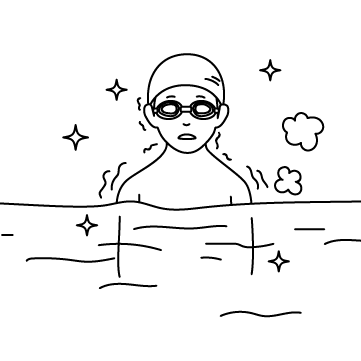秋学期の為のアイデア探しをしていたらありそうでなかった取り組みを見つけました。
”ゴミ拾い”これは誰かがやるものそう思っていませんか?
”ゴミを拾う”その行為がお金を生み出すようになると人々はどのように行動するようになるでしょうか。

https://eleminist.com/article/2198
美しい海に囲まれた沖縄で、水中のごみ拾いをボランティアではなくエンターテイメントに変えようと取り組んでいるのは、5月30日(ごみゼロの日)に開業した水中ゴミ拾い専門ダイビングショップ「Dr.blue(ドクターブルー)」だ。
近年、海には大量のプラスチックごみが流れ込み、自然分解が困難とされるプラスチックは海の生態系に悪影響を及ぼし続けている。5mm以下の細かなプラスチック片(マイクロプラスチック)になった場合は、半永久的に海を漂い続けるとも言われ、水中から除去することは非常に困難だ。
こうしたマイクロプラスチックは、海の生物の体内に取り込まれ、その生物自体を苦しめるほか、水産物として私たち人間の食卓に上がることも多く、人体への悪影響も懸念されている。
海の広さと、ごみの回収にかかる莫大なコスト、それに伴う危険から、海に沈んでしまったごみをすべて回収するは困難だとされるなかでも、こうした瞬間に日常生活のごみは海に流れ続けていることを忘れてはならない。
待ったなしの海の環境問題をより広く伝え、ダイバーの力で少しでも改善していければと考え「ごみ拾い×スキューバダイビング=水中ごみ拾い」を新しいアクティビティにしようと、Dr.blueは「水中ゴミ拾い専門店」としての開業を目指した。
ダイバーは全国に150万人いると言われる。ダイバー全員が1ダイブにつき1個でもごみを拾えば、水中のごみを150万個も回収できることになる。開業支援金を募るクラウドファンディングでは、ダイバーのみならず、ノンダイバーにも呼びかけを行い、海の環境問題を多くの人に伝えられるよう取り組まれた。結果、300万円以上の支援金を集めることに成功し、天気にも恵まれた5月30日にオープンを迎えた。
海に流れるプラスチックゴミの量は年間で800万トン。
これは、ジャンボジェット機5万機、東京ドーム7個分の重量に匹敵する量です。プラスチックゴミが大量に排出されているのが現状ですが、エレンマッカーサー財団は、このペースでプラスチックゴミが増え続けると、2050年には重量ベースでプラスチックゴミの量が魚の量を上回ると予想しました。
現在、海底に沈んでいるマイクロプラスチックの量は1400万トンだと言われています。その量なんと東京スカイツリー340基分です。
また、マイクロプラスチックは、発生源の違いによって、2種類に分けられます。
一次マイクロプラスチック
一次マイクロプラスチックとは、製造時点で既に細かいプラスチックのこと。
洗顔料や歯磨き粉などのスクラブ剤が含む小さなビーズ(マイクロプラスチックビーズ)などが挙げられます。
二次マイクロプラスチック
二次マイクロプラスチックとは、太陽の紫外線や波の作用など、外的な刺激を受けて、細かくなったプラスチックのことです。
ビニール袋やペットボトルなどのプラスチック製品が外部からの刺激を受けることでマイクロプラスチックとなるものが挙げられます。
日本国内で一番多い海洋プラスチックは、漁業に使われる網やロープが重量では約半数の40%を占め、容積では25%を超えます。一方、個数では飲料用ボトルが38%を占めます。
この結果は意外なのではないでしょうか。
レジ袋を有料化してもしなくても、本質的な問題の根源はそこのではないのかもしれません。
それこそコストがかかっても、完全リサイクル商品にする企業努力や自然に戻りやすい素材での飲料ボトルなど工夫すべき点はやまほどあるのではないでしょうか。
English edition
While searching for ideas for the fall semester, I came across an unlikely initiative.
Do you think that "picking up trash" is something that someone else does?
How would people behave if the act of "picking up trash" started to generate money?
https://eleminist.com/article/2198
In Okinawa, surrounded by beautiful ocean, a dive store specializing in underwater trash pickup, "Dr. Blue," which opened on May 30 (Garbage Zero Day), is working to turn underwater trash pickup into entertainment rather than a volunteer activity.
In recent years, a large amount of plastic debris has been flowing into the ocean, and this plastic, which is said to be difficult to decompose naturally, continues to have a negative impact on the marine ecosystem. It is extremely difficult to remove them from the water.
Microplastics are taken into the bodies of marine organisms, causing them to suffer, and are often served as marine products on human tables, raising concerns about their adverse effects on the human body.
Even though it is said that it is difficult to collect all the garbage that has sunk into the ocean due to the size of the ocean, the enormous cost of collecting the garbage, and the danger involved, we must not forget that the garbage of daily life continues to flow into the ocean at these moments.
Dr.blue aimed to open a store specializing in underwater trash pickup in order to make "trash pickup x scuba diving = underwater trash pickup" a new activity, in the hope of communicating more widely the environmental problems of the oceans, which have been waiting for a long time, and to improve them even a little with the help of divers.
It is said that there are 1.5 million divers in Japan. If every diver picked up at least one piece of trash per dive, 1.5 million pieces of underwater trash would be collected. The crowdfunding campaign to raise funds to support the opening of the dive center was not limited to divers; non-divers were also invited to participate, so that the marine environmental issues could be communicated to as many people as possible. As a result, they succeeded in raising more than 3 million yen in support, and opened on May 30, a day blessed with fine weather.
The amount of plastic waste that flows into the ocean is 8 million tons per year.
This amount is equivalent to the weight of 50,000 jumbo jets or seven Tokyo domes. The Ellen MacArthur Foundation predicted that if plastic waste continues to grow at this rate, by 2050 the amount of plastic waste will exceed the amount of fish on a weight basis.
Currently, the amount of microplastics on the ocean floor is estimated to be 14 million tons. This amount is equivalent to 340 units of the Tokyo Sky Tree.
Microplastics can be divided into two types depending on the source.
Primary Microplastics
Primary microplastics are plastics that are already fine at the time of manufacture.
Examples include the tiny beads (microplastic beads) contained in scrubbing agents such as face wash and toothpaste.
Secondary Microplastics
Secondary microplastics are plastics that have become finer due to external stimuli such as the sun's ultraviolet rays or the action of waves.
Examples include plastic bags, plastic bottles, and other plastic products that become microplastics when they are subjected to external stimuli.
The most common marine plastics in Japan are nets and ropes used in the fishing industry, which account for about half (40%) by weight and more than 25% by volume. On the other hand, beverage bottles account for 38% by volume.
This result may be surprising.
Whether or not to charge for plastic bags, the root of the essential problem may not lie there.
Even if it costs more, there may be many ways to address the problem, such as corporate efforts to use completely recycled products and beverage bottles made of materials that can be easily returned to nature.